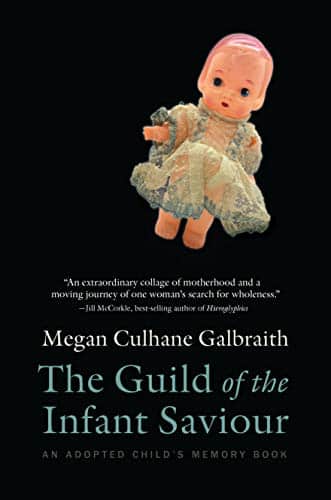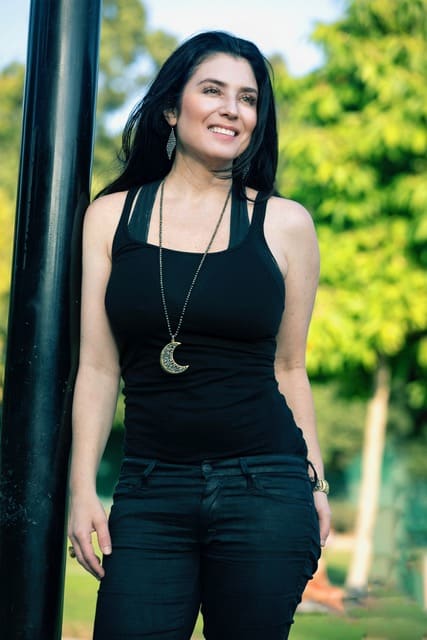By Megan Margulies
Late last summer, still bleary eyed and shuffling from my bed, I spotted a red breasted robin rustling beneath the leaves of a tree outside my bathroom window. It launched from the leaves, returning minutes later to the same spot, a commotion under the summer foliage. Delighted, I realized there was a hidden nest. Every morning I looked out toward that branch, waiting to see a breakfast delivery of worms or grubs, relieved when I saw a fluttery landing as proof of life.
As the weather got colder and the leaves began to thin out, I hoped to catch a glimpse of the birds in their exposed nest. But by the time it was revealed, the leaves on the ground below, they had moved out. The nest sat empty on the bare branch throughout the winter as COVID-19 cases surged, the world quiet again. The winter birds remained—black capped chickadees darting from branch to branch—but the chatter quieted.
The United States lost over five-hundred-thousand lives this year from COVID-19. This winter, at the pandemic’s worst, the United States Covid-19 hospitalizations peaked with 132,000 patients. We lost more than 20,000 people a week. Families upended, loves weighted by the despair of loss, and the world muted with cold and snow. What do we do with this loss? With the empty space left behind by the ones we love?
I’ve been looking to birds for proof of life since my beloved grandfather died in 2011. I struggled with the void he left behind, and I took great comfort in an obnoxiously loud male cardinal that visited me on our back patio, or sang to me while I ate breakfast. The cardinal’s song was so loud that it seemed there wasn’t even a glass pane between us. The old robin’s nest outside of my window will never be used again, but I like to see it out there, a reminder of life. We need these reminders. We need the birds.
Last spring when COVID first shut everything down, the animals came out. There are scientific explanations for these sightings. For the birds, it was less sound pollution, spring migratory habits, and maybe humans were just paying more attention. Sure, there are scientific explanations for the increased bird activity, but I think the spiritual explanations are worth considering.
Spiritual mediums believe that cardinals represent visitors from the spirit world, to either relay a message or simply to let you know that they are still with you, especially when dealing with a difficult situation. For centuries, across different cultures and religions, birds have been associated with death, renewal, and believed to be the messengers of spirits. Psychopomps, derived from the Greek word meaning “guide of souls,” are creatures who escort newly deceased souls from earth to the afterlife. In the form of birds these psychopomps wait in large groups near the soul who is soon to depart. Perhaps the birds of last spring and summer were our psychopomps, waiting to guide the souls we had yet to lose.
Some cultures believe that birds, like ravens and crows, to be omens of tragedy to come, but some believe birds provide a vessel for the souls who have departed. In Hinduism, spirits of ancestors reside in crows, and the birds are fed as a way of nourishing the souls of the ancestors. In Nepal, crows are worshiped on the first day of Tihar. Ancient Egyptians believed that our souls left the body in the form of a hawk or raven. They even included narrow shafts leading out from the tombs so that the birds could come and go as they pleased. Horus, the god of the sky, had a hawk (or falcon’s) head.
Since mid-February, with winter hinting a departure and taking its muffled world with it, I’ve noticed more birdsong, my yard crowded and noisy again. We see hope ahead with increased vaccinations. I count each bird as a sign of life, as proof of that the departed souls are still with us. If we look up to the sky, we’re never really alone.
My mom, who lives in New York City and rides her bike through Central Park, keeps spotting a hawk that swoops over her head. She texted me a picture of it sitting at the top of a tree and wrote “we’re friends now.” I sent her back a photo of our neighborhood hawk who perched on a tree limb scanning the ground for a small rodent to eat. While walking with my daughter recently we spooked a pair of grey doves. They flapped clumsily toward the sky, landing on the roof of our house, where they began their haunting owl-like sounds. “The doves are usually in pairs,” I tell my daughter as we watch them, standing hand-in-hand.
In many traditions doves symbolize healing powers and the transition from one state of existence to the next. The Bible shows the dove delivering messages from God. Pablo Picasso’s lithograph “Dove with Sun” shows a dove, wings outstretched, over the rubble of war and destruction. It was later used as the poster image for the World Congress for General Disbarment and Peace held in Moscow in 1962. How many doves do we need for all of our rubble? I watch them on my roof, pacing side-by-side, assessing the world below them.
The other day a bright red cardinal balanced on a cable wire near my front door. He sang loudly, his chest expanding and deflating with his tune, and then he flew off. Was it my grandfather? Or just another departed soul now flying free? He returned that afternoon. After saying goodbye to a friend whose father is dying of cancer, the cardinal landed on the spot she had been standing. She had already driven away, so I texted to tell her, hoping to give her a sense of comfort. “Someone is definitely watching over you,” I told her. She responded, “I feel it.”
In a paper entitled, “On the Relationship between Birds and Spirits of the Dead,” Professor Christopher Moreman writes, “Birds reflect a fundamental aspect of human nature—the denial of death as finality through a desire for renewal, transformation, and rebirth.” After a year of such tremendous loss, over 2.65 million souls leaving this earth, I embrace this denial. I hope that those who have lost loved ones look up to the sky. I hope that they see them soaring and singing.
Megan Margulies is a memoirist and native New Yorker. She writes about womanhood, motherhood, and figuring out why bodies do the things they do. Her essays and reported pieces have appeared in various publications including The New York Times, The Atlantic, Washington Post, New York Magazine, and LitHub. She lives outside of Boston with her husband and two daughters.
~~~~~~~~~~~~~~~~~~~~~~~~~~~
Megan Galbraith is a writer we keep our eye on, in part because she does amazing work with found objects, and in part because she is fearless in her writing. Her debut memoir-in-essays, The Guild of the Infant Saviour: An Adopted Child’s Memory Book , is everything we hoped for from this creative artist. Born in a charity hospital in Hell’s Kitchen four years before Governor Rockefeller legalized abortion in New York. Galbraith’s birth mother was sent away to The Guild of the Infant Saviour––a Catholic home for unwed mothers in Manhattan––to give birth in secret. On the eve of becoming a mother herself, Galbraith began a search for the truth about her past, which led to a realization of her two identities and three mothers.
This is a remarkable book. The writing is steller, the visual art is effective, and the story itself is important.
Pick up a copy at Bookshop.org or Amazon and let us know what you think!
~~~~~~~~~~~~~~~~~~~~~~~~~~~
Anti-racist resources, because silence is not an option
~~~~~~~~~~~~~~~~~~~~~~~~~~~



a magnificent piece of writing. Magical and so thought provoking